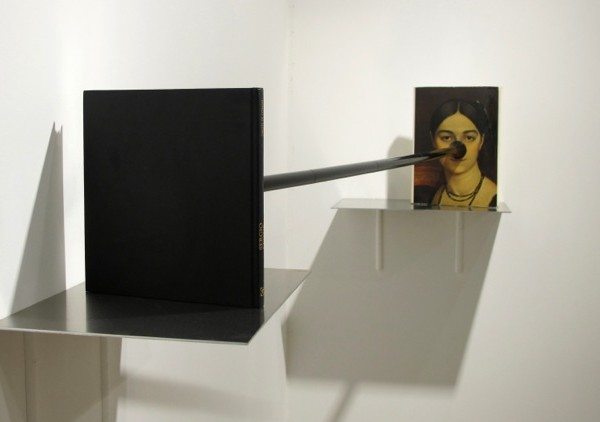


Jorge Pedro Núñez
Born in 1976 in Caracas (Venezuela), Jorge Pedro Núñez, lives and works between Paris and Caracas.
He graduated in 2006 from l’Ecole Nationale Supérieure d’arts de Paris-Cergy and is represented by the Galerie Crèvecoeur (Paris).
Statement
Jorge Pedro Núñez’s work consists of collage, sculpture and installation and is a gateway both between different artistic and popular cultures and between the West and America. His oeuvre is based on a meticulous practice of recycling, performed at several levels: the recycling of existing elements echoes those forms and signs that are well-referenced in modern and contemporary art history, as according to the artist, these elements are the “archetypes of the art of déjà-vu”. He combines cultural objects (such as vinyl records or the pages from magazines) with “poor” objects taken from markets stalls in ambitious constructions or scaffolding that can be likened to living monuments: Hommage à Simon Rodia, The Watts Towers (nuestro pueblo), 2009 and Todo lo que MAM me dio (2010). He creates sculptures by folding and cutting up bicycle tires as in Être tordue (2009-2012) and Bicycle Tour (2012), both of which can be said to be a wry reworking or reinterpretation of two veritable icons of modernity; Marcel Duchamp’s ready-mades and Soviet constructivist sculpture. The fusion created by the artist may be said to put history and cultural references into perspective. Núñez’s ambitions or objective in the medium of plastic arts relies upon the economy of materials used and aims at initiating discussion on the inclusion of the artist in history and in its various flows and movements.
Madame Devauçay – Sergio Leone, 2012
Installation, books, lamp stand
34 x 26 x 163 cm / Unique piece
Acquisition in 2012
An iconoclastic ambition underlines the sculpture Madame Devauçay, Sergio Leone which consists of the assembly or montage of two books and a slender lamp stand. The lamp stand is positioned in such a way that the covers of these two books are connected. On one side, we have Madame Devauçay, a portrait of a bourgeois lady painted by Jean-Auguste-Dominique Ingres. The lamp stand is positioned right on her nose. On the other side of the structure, the square appearing on the cover of the book on director Sergio Leone seems to propel itself through space, recalling supremacist utopia. This curiously dynamic association, based on a pastiche gesture, creates a mental circulation of ideas and images. By appropriating art books in this way, Núñez undermines their original function and makes them the tools of his self-questioning.